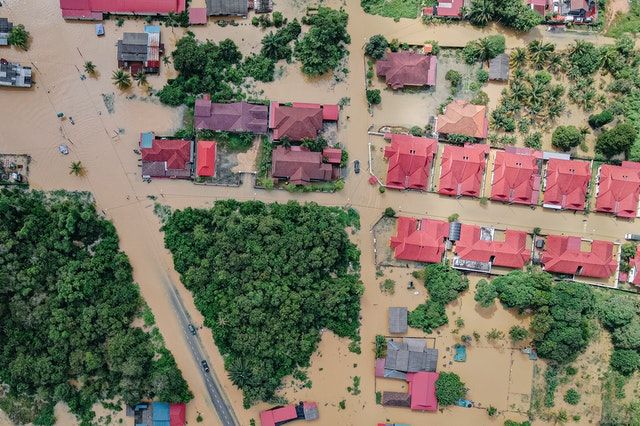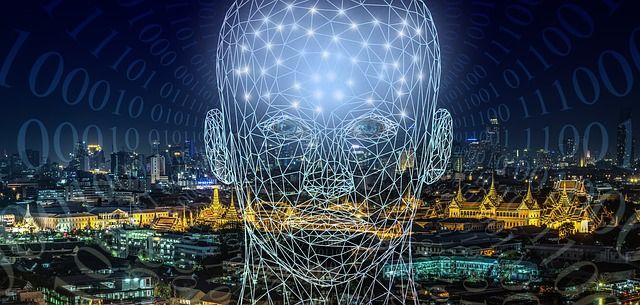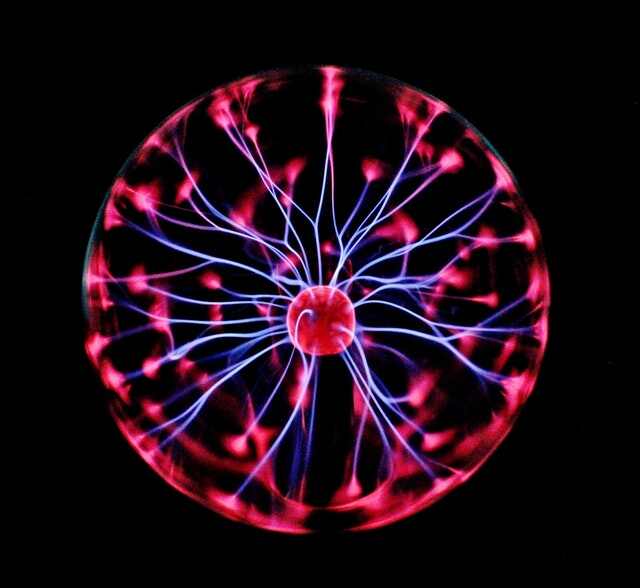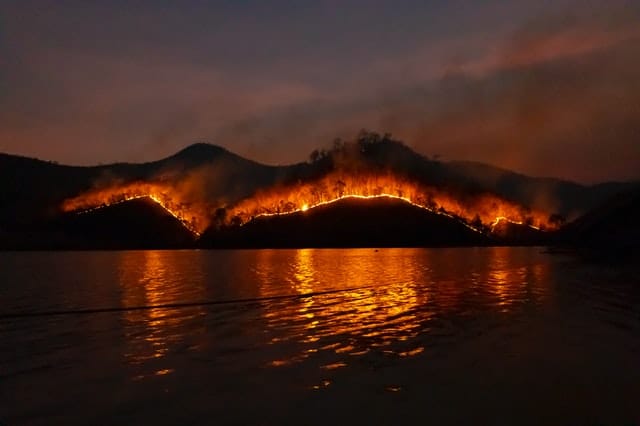Flood Predictions Using AI
AI approaches are doing wonders when it comes to forecasting future events since they emulate the non-linear behaviour of a given phenomenon, resulting in a more accurate prediction. AI has the ability to predict floods before they happen, thanks to massive volumes of high-quality datasets.

Natural disasters are a horrible reality that human life has been witnessing since the creation of mankind. Such disasters impact loads of people causing damage to their lives and properties. According to WHO, natural disasters impact around 150 million humans every year. In 2020, these disasters caused a global economic loss of about $268 billion.
Floods are the most frequently prevailing natural disaster that leads to drastic environmental, social, and economic damage. They are responsible for hundreds of millions of evacuated residents and tens of thousands of mortalities. As per WHO, between the years 1998-2017, above 2 billion people were affected by floods across the globe. In 2018, the districts around the Dead Sea (Jordan) were flooded resulting in the mortalities of 21 children and injuries of 35, who were in Jordan on a school trip. The UN Department of Disaster Risk Reduction reports that between 2000 and 2019 around 79,732 mortalities were witnessed in India as a result of 321 natural disasters. In addition to the increased rate of mortalities and displaced homeowners, these floods also result in economic damage to the government as well as the residents. In 2020, floods resulted in property and crop damage worth more than $1 billion in the USA. All this happens because of the lack of moderation measures and the systems of early warnings. Floods can't be avoided, but accurate predictions and early arrangements can stave off its worst impacts.


In this article, we will walk through how AI is helping to make accurate flood predictions thereby saving lives and properties.
Need for AI in Flood Predictions
The conventional systems used for flood prediction do not provide accurate flood forecasting because of the lack of sufficient information. Sometimes, this inaccuracy leads to harmful results as the residents can't make evacuation decisions timely and put their lives in danger. Hydrology uses the one-dimensional conventional methods to forecast flood levels but this forecast has accuracy issues because of the non-linear behavior of floods and lack of certain variables. A physical model involving Hydraulic principles is another approach to forecast floods. However, these models may also deliver inaccurate results because of a great number of errors and the requirement for more complex and precise modelling. Lack of hydro-meteorological variables such as water level and flow, precipitation, and rainfall also result in inaccurate predictions.
Here comes the most emerging technology of the era i.e., AI that has been helping people in numerous segments including customer service, healthcare, trading, etc., for decades. A few years back, researchers found its worth in predicting natural disasters as well. AI techniques are doing miracles in predicting future events as they imitate the non-linear behavior of a specific phenomenon leading to a more accurate forecast. Occupied with gigantic amounts of high-quality datasets, AI has the potential to predict floods before its occurrence.

AI-powered flood forecasting has the following advantages over conventional modeling:
- It’s a faster method than the traditional one, generating flood forecasts and warnings in milliseconds.
- It does not involve any hypothetical assumptions and is purely works on real observed data.
- It is a self-improving method that improves with data and time.
Sella Navo, the head of the Flood Forecasting Initiative at Google believes that AI can help in circulating flood warnings in a very short time as compared to traditional methods and hence can avoid 30 to 50% damage. Researchers are anticipating that the time is not far when the conventional observation methods would be completely replaced by AI models.
How does AI work to predict floods?
While satellites and sensors are excellent tools for data collection from various angles, AI is an impeccable tool for the analysis of this massive information and making predictions about what is going to happen and where that event is most likely to occur. In the same context, AI is holding the key to accurate flood forecasting. First of all, the data to train the AI system is gathered through past data of rainfall and flood simulations. With accurate real-world data gathered from governmental agencies, the AI-based forecasting models make predictions. ML systems identify the unstructured data and classify it into different categories. AI-based predictive analytics then scans the assembled data with a focus on previously identified or uploaded patterns. For this AI-based prediction process, the best analogy is the "Human Brain." By noticing even just 2-3 features of a definite pattern found in the historical datasets, the AI-powered forecasting model can predict not just the time and location of flooding but also the severity of their occurrence.

To predict flooding, AI employs two main models:
The Hydrological Model: This model is helpful for scientists in making water level predictions in a river.
The Invasion Model: The model identifies the areas most likely to be hit by floods. This model can help avoid property damage and mortalities.
Moreover, AI by gathering crowd-sourced data through Twitter, Facebook and other smartphone apps are also monitoring urban flooding. The crowd-sourced data carries information and images of the locations that are identified by AI. Such systems can monitor and anticipate the damage caused by floods.
AI Systems for Flood Prediction
Google's AI-powered Flood Forecasting Model
The tech giant Google has expanded an AI-based flood prediction program in 2017 to address the issue of the world's most prevailing disaster – Riverine Floods. This flood prediction program is working mainly in South Asia where India, China, and Bangladesh are among the countries that are mainly hit by natural disasters with extensive infrastructure damage and loss of lives. Google employs AI, ML expertise, and physics-based modeling to develop scalable and reliable inundation models. In Google's AI-based flood forecasting system, first of all, the probability of a river to flood is determined. Governments as well as disaster management agencies have been employing hydrological models to boost up the accuracy and increase the lead time of the forecast. This model gets input such as precipitation and water level gauge measurements. Based on this input, the model then generates its output by forecasting the river water level at some stage in the future. With this system, the flood prediction accuracy is 75%, where the error rate for the Hydrological model is just 12 centimeters, whereas that of the Invasion model is just 100 meters.

Hence, this AI system delivers reliable flood information in real-time and warns the residents through Google Maps or Google search to enable them to take defensive measures. Until now, Google has circulated above 100 million notifications, saving the lives of 360 million residents living in the areas most likely to be hit by floods. Technology advancement has allowed Google to improve the warning time. Today, the top priority of Google is to enable its flood forecasting model to issue flood alerts to more people.
Pilot Program
The Pilot program of this AI-powered system for flood prediction was initiated in Bihar (India) supporting the government to achieve its goals. The government can't predict regions precisely that are under the extensive risk of getting hit by floods. Google uses the satellite images and based on the river's trajectory, it develops a model of the districts mostly endangered with the risk of flooding. Then, based on this prediction, warnings are issued to the residents to evacuate the places. According to Google, this flood forecasting model has issued above 27 million flood alerts by far just in India. Bihar government is circulating flood alerts with a lead time of 72 hours; hence residents get three days in advance to take precautionary measures. As an outcome of these efforts, floods resulted in just 25 deaths in Bihar in 2020 that was 130 in number in 2019. At present, the main goal of Google is to improve the circulation of alerts to more people rather than improving accuracy.

Community-based Alert System
Lack of internet access in many areas is the major roadblock in achieving Google's goal. To beat this challenge, Google is taking help from local NGOs to develop an alert system that would be community-based. With this community-based alert system, the residents will not have to sign up to get alerts or warnings about the natural disaster, rather the warning system would be integrated into Google Search and Google Maps. They would just have to type "flood" along with their location, and the system will automatically provide them with the accurate information in a matter of seconds. However, this predictive model of AI is by far working for just Riverine Flooding, and does not account for Flash floods. The good thing is that Sella Nevo is aiming to pursue it for Flash Flooding as well.
Piccard's AI-based Flash Flood Prediction and Warning System
Flash flooding can take just a few minutes after severe rainfall. It is so simultaneous that government can hardly take any appropriate actions to handle the situation. Piccard’s AI system is very helpful to predict flash floods and avoid any socioeconomic damages. It is a fully automated AI system that predicts rainfall causing floods by using IoT sensors and then issues warnings before even the rainfall occurs. This system works as follows:
Piccard’s Flash Flood Prediction Model involves the selection of hotspot locations and monitoring its water level. Its AI algorithm learns from weather data and makes flood predictions at the selected location around 1-4 hours before the event occurs. The system uses a mobile dashboard or a cloud-based desktop to envisage flood risk. Then it sends out an email or SMS alert to the residents of all the neighboring districts who are most likely to be hit by the anticipated flood.

ML for Flood Predictions
Machine Learning (ML) – a field of AI is emerging as a significant instrument to automatically generate flood forecasts. Computational algorithms are extremely helpful in generating flood predictions in endangered areas of the river and the impact of flooding in the surrounded districts. Besides generating predictions, ML models can map out/plot, and monitor flood events while delivering cost-effective solutions
The development of an ML-based flood prediction model involves the past data of flood events and real-time combined data of numerous rain gauges. The data sources include water level and rainfall measured with rain gauges, satellites, radars, or any other multisensory systems. ML applied on remote sensing data can predict the exposure of flood, whereas on social media data can boost flood response.
Best ML Algorithms for Flood Forecasting
The best ML algorithms delivering ideal results for flood forecasting include:
- Artificial Neural Networks
- Deep Learning Neural Networks
- Neuro-Fuzzy
- Support Vector Regression (SVR)
- Support Vector Machine (SVM)
Artificial Neural Networks (ANNs)
ANNs are very efficient and versatile learning algorithms to model complex flood processes. These algorithms can help predict floods with precise approximation and high fault tolerance. ML model using ANN algorithm receives distributed rainfall information from numerous rain gauges fixed in the mountainous regions and uses this information to predict the river water level at the division closing the mountainous district. The level of river water and its flow at this section a few hours before the event demonstrates the behavior of the river subject to rainfall disruption. ANN model can make a forecast of the flood within a few seconds. This real-time flood prediction model can be extremely helpful for timely warning and calamity prevention. Therefore, ANNs turn out to be the most reliable AI tools for developing black-box models of nonlinear and complex relationships between river flow and discharge prediction as well as between rainfall and flood. However, ANNs require "Parameter tuning" to iterate and this is the major drawback of this algorithm.
Deep Learning (DL) Neural Networks
In recent years, AI and its technological innovations are remarkably advancing. The advent of Deep Learning is another giant leap. In Japan, an AI-based prediction technology at the river level is going to be developed by Nippon Koei (NK). NK is using DL models to predict the level of river water to improve the accuracy of flood forecasting. The NK engineers are working on river engineering and hydrology to develop models. Image recognition and radar observations are used to forecast unprecedented floods by improving the applicability of the forecasting system. NK is also emphasizing improving convenience by integrating self-learning functions with neural network forecasting of the flood. This, in turn, simplifies the maintenance.
Neuro-Fuzzy
Neuro-Fuzzy is an ML algorithm used in the Adaptive Neuro-Fuzzy Inference System (ANFIS). It is a mathematical model that employs computing techniques in natural language. In this qualitative modeling scheme, the expert knowledge is incorporated into FIS (Fuzzy Inference System). This model uses approximation function to imitate human learning, and develop a nonlinear model for hydrological events like Floods. ANFIS is a very common flood prediction model due to its fast implementation, precise learning, and robust abilities for generalization.
Support Vector Regression (SVR) and Support Vector Machine (SVM)
SVR and SVM both are supervised learning algorithms working on the theory of statistical learning and the rule of operational risk reduction. They are highly popular for flood prediction among hydrologists and can serve as an alternative to ANNs. These models are used in several flood prediction cases such as extreme rainfall, rainfall-runoff, precipitation, streamflow and reservoir inflow, soil moisture, and flood quantities and time series. SVM and SVR both deliver promising results, better performance, and remarkable generalization ability as compared to Neural Networks.

Wrapping Note
Climate changes are an open invitation to natural disasters. The changing pattern of rainfall and river water levels can bring about severe environmental, social, and economic consequences in the form of floods. To avoid this environmental and socioeconomic damage, the most desirable goal of the governments is précised flood forecasting. Through timely warning systems, the economic damage and fatalities can be reduced by more than a third. Opportunely, today we are witnessing the most revolutionary technology of the era i.e., AI coming up with its various applications to assist in accurate forecasting. AI, ML, and DL models to determine flooded areas are way more successful than the conventional methods as they involve huge sets of auxiliary data and predictive analytics. Although natural disasters are never completely predictable, the rescue teams must be aware of the current situation in the rivers and the surrounding fields. To better utilize this information, the potentially affected area must be mapped out in real-time. Research reveals that AI-based flood prediction systems using high-quality data and effective algorithms can perform rapid and precise mapping, and can predict flooded areas with more accuracy.
Since the citizens expect the governments to adopt some proactive approach to mitigate the after-effects of floods, the AI-based flood prediction systems are ideal for resolving flooding issues. This technology can precisely predict floods and enable governments to send out accurate warnings in advance to reduce fatalities and other damages. Hence AI-based flood prediction models can contribute to policy suggestion, and risk reduction for lives and properties, as the government can formulate policies in advance to avoid any major loss in the future. In a nutshell, by taking proactive measures based on Artificial Intelligence, higher authorities can decrease the potential hazards and liability emerging from floods.



